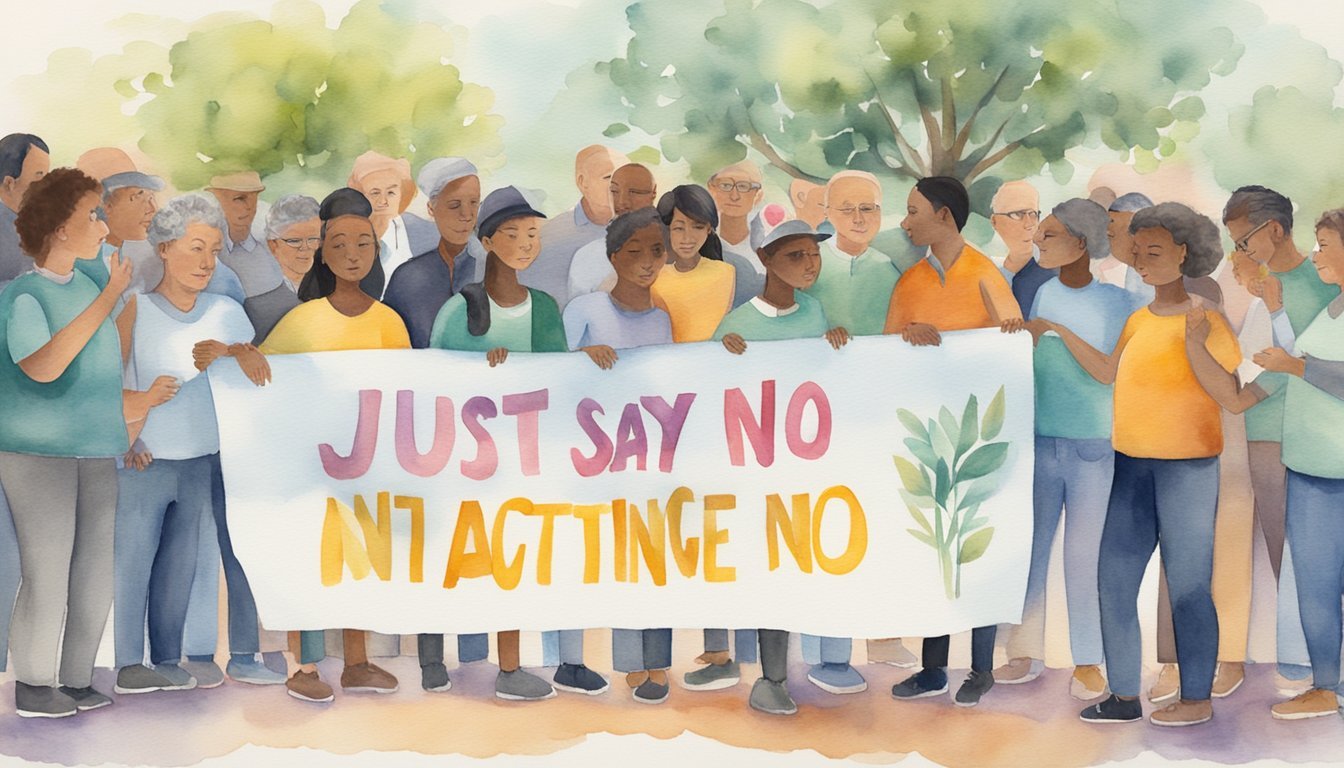Origins and Principles of ‘Just Say No’
The “Just Say No” campaign, initiated in the 1980s, centered on an anti-drug message that became a hallmark of Nancy Reagan’s efforts as First Lady. It embodied a simple slogan with a powerful call to action against drug use.
Nancy Reagan’s Involvement
Nancy Reagan became intrinsically linked with the “Just Say No” movement during her husband’s presidency. She championed the campaign as a response to the escalating drug crisis, focusing primarily on the nation’s youth. Her dedication to the cause was evident through her numerous appearances and speeches where she encouraged children and teenagers to reject peer pressure by simply saying “no” to drugs. This message was a centerpiece of Nancy Reagan’s mission as First Lady.
‘Just Say No’ Campaign Development
The development of the “Just Say No” campaign was initiated as a supplement to the broader War on Drugs. The movement sought to create an easy-to-remember slogan that could be used to foster resistance to substance abuse. The phrase “Just Say No” was promoted through various media outlets and events, encapsulating the campaign’s aim to provide children with affirming ways to decline drugs. This strategy was evident at organized rally events across the country, which Nancy Reagan often hosted.
Role of the White House and Ronald Reagan
The White House under Ronald Reagan played a pivotal role in elevating the “Just Say No” campaign to a national policy level. Ronald Reagan’s administration increased federal funding to fight drug abuse and underscored the importance of anti-drug programs. The campaign became synonymous with the Reagan presidency and was also a significant aspect of the legacy that the Reagans left in the White House. Throughout his time in office, Ronald Reagan supported his wife’s initiatives, demonstrating the administration’s united front against drugs. The presidency’s policies further solidified the resonance of the “Just Say No” message.
Influence and Outcomes of ‘Just Say No’

The ‘Just Say No’ campaign, initiated in the 1980s, significantly influenced the United States’ approach to drug education and prevention programs, yielding mixed results across various aspects of society, particularly among youth.
Impact on Children and Teens
Children and teens, the primary targets of the ‘Just Say No’ movement, were exposed to its messaging through diverse mediums. The campaign especially proliferated in educational settings where programs like Drug Abuse Resistance Education (D.A.R.E.) became commonplace, focusing on resistance to peer pressure and making drug-free choices. The National Institutes of Health examined these efforts, finding that the program’s impact varied widely, with some reports questioning its long-term effectiveness in deterring drug use among adolescents.
Education and Prevention Programs
The ‘Just Say No’ message was foundational to the development of education and prevention programs across the United States. These programs, often supported by the Reagan administration, sought to arm children and teens with the skills to resist drug and alcohol use. One widely known example, the D.A.R.E. program, was introduced in California and later adopted nationally, emphasizing the development of social skills to avoid the temptations of drugs, alcohol, and tobacco.
Critical Perspectives and Legacy
There has been critical reflection on the ‘Just Say No’ campaign’s legacy and efficacy. Researchers argue that the oversimplification of complex behavioral norms and the multifaceted issue of substance abuse led to its limited success. The focus on public awareness without parallel systemic change has also been critiqued, considering the broader implications on the criminal justice system and mass incarceration. Despite this, ‘Just Say No’ was a significant driver for the development of substance abuse prevention programs and has left a lasting imprint on the anti-drug movement’s rhetoric and methods.

